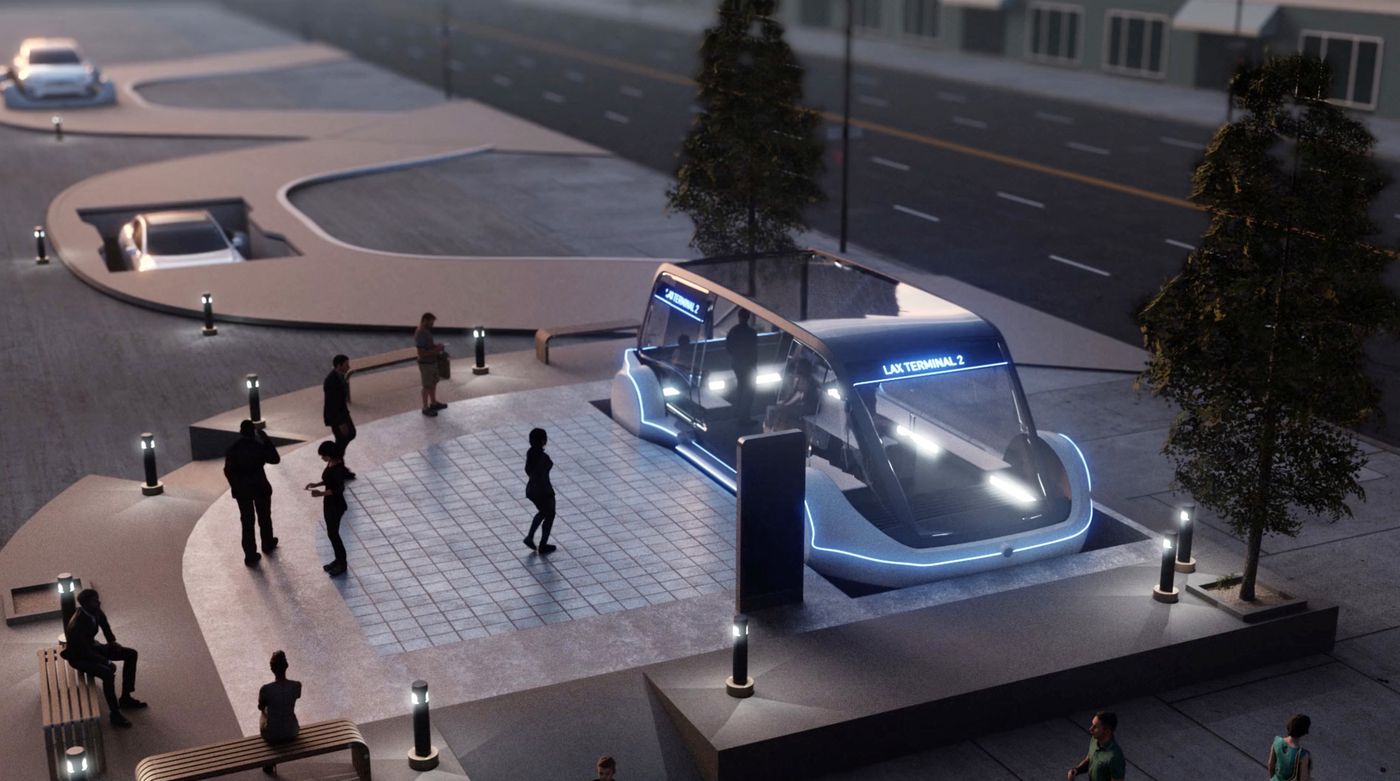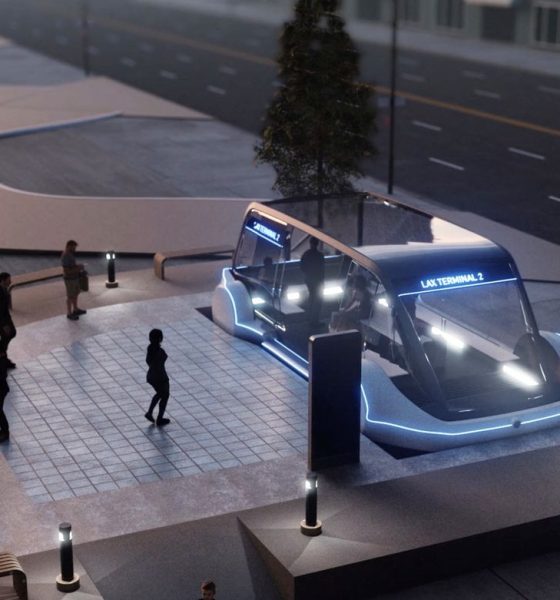

News
Elon Musk’s Boring Co. LA tunnel faces lawsuit from local neighborhood groups
The Boring Company’s 2.7-mile proof-of-concept tunnel under Sepulveda Boulevard in Los Angeles, CA is facing stiff opposition from two local neighborhood groups, after the organizations filed a joint lawsuit against the tunneling startup’s exemption from environmental review.
The lawsuit was filed by two Westside organizations — the Brentwood Residents Coalition and the Sunset Coalition. Filed last month, the neighborhood groups’ suit alleges that the local government violated state law when it decided to exempt the Boring Company’s proof-of-concept tunnel from review under the California Environmental Quality Act (CEQA). The neighborhood groups are also challenging the city’s decision last March that permitted The Boring Co. to haul dirt from its tunneling project.
At the core of the lawsuit is the allegation that the Boring Company’s proof-of-concept project is actually part of a larger system of tunnels that would eventually be used for public transportation. According to the neighborhood groups, state law prohibits government agencies such as the City Council Public Works Committee to grant “piecemeal” approval to just one component of a larger project. The exemption also expedites the tunneling startup’s initiatives, considering that environmental reviews could add months or even years to a project’s timeline.

The Boring Company’s conceptual map for its planned Los Angeles tunnel system. [Credit: The Boring Company]
“The state’s environmental law cannot be evaded by chopping large projects into smaller pieces that taken individually appear to have no significant environmental impacts,” part of the lawsuit stated, according to the Los Angeles Times.
Santa Monica City Manager Rick Cole echoed the opposition of the neighborhood groups to the Boring Company’s tunneling project. In a statement to the Times, Cole, who previously served as deputy mayor to Garcetti, claimed that the startup’s tunnel systems would create a class divide among commuters.
“We’ll have people stuck in traffic on the surface, and this miracle fast lane underground for the people who can afford it. It’ll be toll lanes on steroids,” Cole said.
In its website’s FAQ, the Boring Company states that its LA proof-of-concept tunnel will be used for testing purposes. The startup also noted that Phase 1, which corresponds to the Sepulveda Blvd – Culver City tunnel, will not be used for public transportation, at least until the project is considered successful by the county, the city government, and by the company itself.
“The tunnel would be used for construction logistics verification, system testing, safety testing, operating procedure verification, and line-switching demonstrations. Phase 1 would not be utilized for public transportation until the proof-of-process tunnel is deemed successful by County government, City government, and TBC.”
The Boring Company has issued an open invitation for a town hall meeting for individuals and parties interested in its LA tunneling projects. As stated in an online flyer for the event, the meeting will be held this Thursday, May 17, 2018 at 7:00 p.m. local time at the Leo Baeck Temple, 1300 N Sepulveda Blvd., Los Angeles, CA.
Just recently, Elon Musk shared a short video clip of the Boring Company’s Hawthorne tunnel, stating that the project is almost complete. Musk also noted that once the tunnel is fully operational, the startup would be offering free rides to the public. Musk reiterated the Boring Company’s commitment to public transportation as well, stating that the system will always give priority to pedestrians and cyclists for “less than the cost of a bus ticket.”

News
Tesla FSD fleet is nearing 7 billion total miles, including 2.5 billion city miles
As can be seen on Tesla’s official FSD webpage, vehicles equipped with the system have now navigated over 6.99 billion miles.

Tesla’s Full Self-Driving (Supervised) fleet is closing in on almost 7 billion total miles driven, as per data posted by the company on its official FSD webpage.
These figures hint at the massive scale of data fueling Tesla’s rapid FSD improvements, which have been quite notable as of late.
FSD mileage milestones
As can be seen on Tesla’s official FSD webpage, vehicles equipped with the system have now navigated over 6.99 billion miles. Tesla owner and avid FSD tester Whole Mars Catalog also shared a screenshot indicating that from the nearly 7 billion miles traveled by the FSD fleet, more than 2.5 billion miles were driven inside cities.
City miles are particularly valuable for complex urban scenarios like unprotected turns, pedestrian interactions, and traffic lights. This is also the difference-maker for FSD, as only complex solutions, such as Waymo’s self-driving taxis, operate similarly on inner-city streets. And even then, incidents such as the San Francisco blackouts have proven challenging for sensor-rich vehicles like Waymos.
Tesla’s data edge
Tesla has a number of advantages in the autonomous vehicle sector, one of which is the size of its fleet and the number of vehicles training FSD on real-world roads. Tesla’s nearly 7 billion FSD miles then allow the company to roll out updates that make its vehicles behave like they are being driven by experienced drivers, even if they are operating on their own.
So notable are Tesla’s improvements to FSD that NVIDIA Director of Robotics Jim Fan, after experiencing FSD v14, noted that the system is the first AI that passes what he described as a “Physical Turing Test.”
“Despite knowing exactly how robot learning works, I still find it magical watching the steering wheel turn by itself. First it feels surreal, next it becomes routine. Then, like the smartphone, taking it away actively hurts. This is how humanity gets rewired and glued to god-like technologies,” Fan wrote in a post on X.
News
Tesla starts showing how FSD will change lives in Europe
Local officials tested the system on narrow country roads and were impressed by FSD’s smooth, human-like driving, with some calling the service a game-changer for everyday life in areas that are far from urban centers.

Tesla has launched Europe’s first public shuttle service using Full Self-Driving (Supervised) in the rural Eifelkreis Bitburg-Prüm region of Germany, demonstrating how the technology can restore independence and mobility for people who struggle with limited transport options.
Local officials tested the system on narrow country roads and were impressed by FSD’s smooth, human-like driving, with some calling the service a game-changer for everyday life in areas that are far from urban centers.
Officials see real impact on rural residents
Arzfeld Mayor Johannes Kuhl and District Administrator Andreas Kruppert personally tested the Tesla shuttle service. This allowed them to see just how well FSD navigated winding lanes and rural roads confidently. Kruppert said, “Autonomous driving sounds like science fiction to many, but we simply see here that it works totally well in rural regions too.” Kuhl, for his part, also noted that FSD “feels like a very experienced driver.”
The pilot complements the area’s “Citizen Bus” program, which provides on-demand rides for elderly residents who can no longer drive themselves. Tesla Europe shared a video of a demonstration of the service, highlighting how FSD gives people their freedom back, even in places where public transport is not as prevalent.
What the Ministry for Economic Affairs and Transport says
Rhineland-Palatinate’s Minister Daniela Schmitt supported the project, praising the collaboration that made this “first of its kind in Europe” possible. As per the ministry, the rural rollout for the service shows FSD’s potential beyond major cities, and it delivers tangible benefits like grocery runs, doctor visits, and social connections for isolated residents.
“Reliable and flexible mobility is especially vital in rural areas. With the launch of a shuttle service using self-driving vehicles (FSD supervised) by Tesla in the Eifelkreis Bitburg-Prüm, an innovative pilot project is now getting underway that complements local community bus services. It is the first project of its kind in Europe.
“The result is a real gain for rural mobility: greater accessibility, more flexibility and tangible benefits for everyday life. A strong signal for innovation, cooperation and future-oriented mobility beyond urban centers,” the ministry wrote in a LinkedIn post.
News
Tesla China quietly posts Robotaxi-related job listing
Tesla China is currently seeking a Low Voltage Electrical Engineer to work on circuit board design for the company’s autonomous vehicles.

Tesla has posted a new job listing in Shanghai explicitly tied to its Robotaxi program, fueling speculation that the company is preparing to launch its dedicated autonomous ride-hailing service in China.
As noted in the listing, Tesla China is currently seeking a Low Voltage Electrical Engineer to work on circuit board design for the company’s autonomous vehicles.
Robotaxi-specific role
The listing, which was shared on social media platform X by industry watcher @tslaming, suggested that Tesla China is looking to fill the role urgently. The job listing itself specifically mentions that the person hired for the role will be working on the Low Voltage Hardware team, which would design the circuit boards that would serve as the nervous system of the Robotaxi.
Key tasks for the role, as indicated in the job listing, include collaboration with PCB layout, firmware, mechanical, program management, and validation teams, among other responsibilities. The role is based in Shanghai.
China Robotaxi launch
China represents a massive potential market for robotaxis, with its dense urban centers and supportive policies in select cities. Tesla has limited permission to roll out FSD in the country, though despite this, its vehicles have been hailed as among the best in the market when it comes to autonomous features. So far, at least, it appears that China supports Tesla’s FSD and Robotaxi rollout.
This was hinted at in November, when Tesla brought the Cybercab to the 8th China International Import Expo (CIIE) in Shanghai, marking the first time that the autonomous two-seater was brought to the Asia-Pacific region. The vehicle, despite not having a release date in China, received a significant amount of interest among the event’s attendees.








